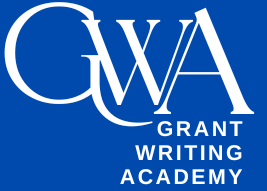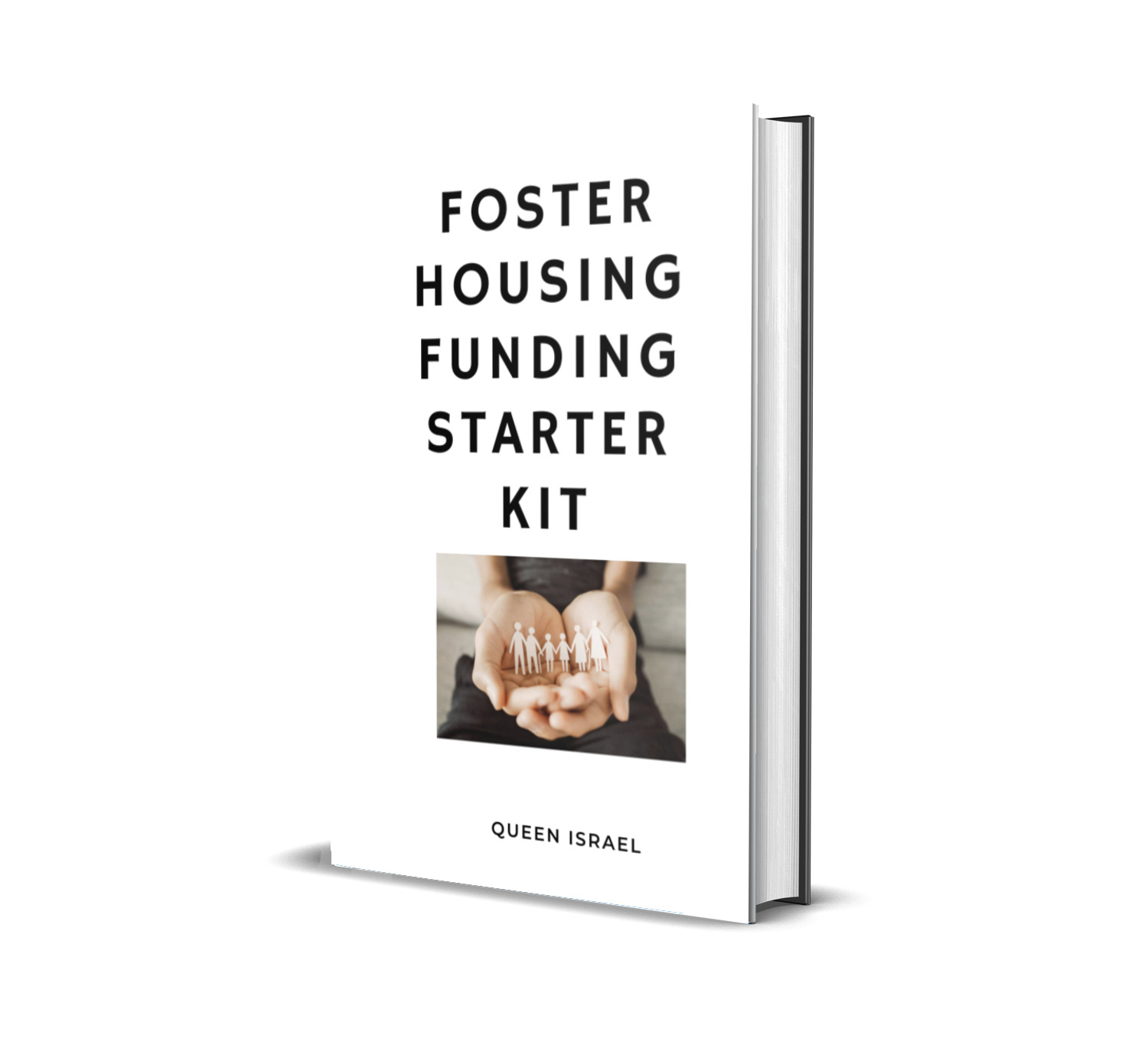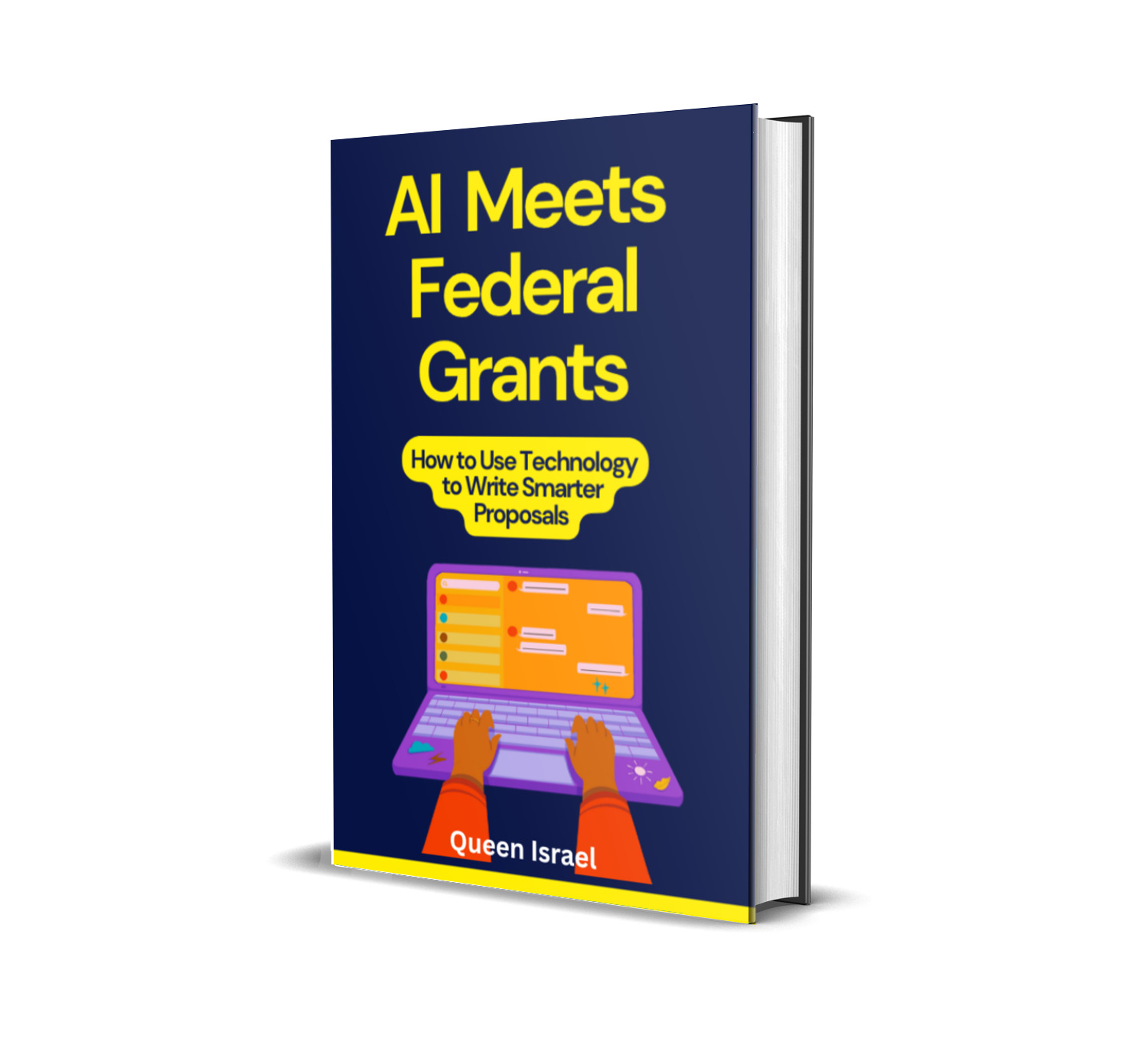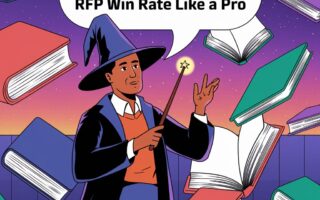Whether you’re a seasoned professional or just beginning your journey in proposal writing, understanding RFP terminology is key to enhancing your success rate
The world of Request for Proposals (RFPs) can sometimes feel overwhelming.
In our modern business environment, the terms and processes associated with RFPs have become essential knowledge for anyone involved in procurement, contract management, or grant writing.
Today, we’ll break down the most common terms, share insights from personal experiences, and discuss why clarity in language matters.
Along the way, you’ll find data and statistics that underscore the importance of a strong grasp of these concepts.
Why RFP Terminology Matters
When I first encountered an RFP in my career, I found the technical language both exciting and, at times, intimidating.
Like many professionals, I quickly learned that clarity and precision in proposal writing can be the difference between winning or losing a contract.
Procurement departments across industries have standardized language that serves as a guide, ensuring that both buyers and sellers are on the same page.
For instance, a well-crafted RFP can streamline the evaluation process by outlining clear criteria, timelines, and deliverables.
According to recent surveys, organizations that invest time in understanding the ins and outs of RFP language experience up to a 50% increase in their proposal success rates.
This data highlights that clarity isn’t just a luxury—it’s a strategic advantage.
Breaking Down Common RFP Terms
To help demystify the often complex language of RFPs, let’s explore some of the most frequently encountered terms:
1. RFP (Request for Proposal)
An RFP is a formal document issued by an organization inviting vendors or service providers to submit proposals for a specific project or service.
It outlines project requirements, timelines, budget constraints, and evaluation criteria. In my experience, a well-defined RFP acts as a roadmap, guiding the process from submission to award.
Using clear language in your response can significantly increase your chances of success.
2. RFQ (Request for Quotation)
While similar to an RFP, an RFQ focuses specifically on obtaining a detailed price quote for a product or service.
Businesses that require straightforward cost information often opt for an RFQ rather than a full proposal. When responding, ensure that your quotation is transparent and competitive.
3. RFI (Request for Information)
An RFI is used by organizations seeking preliminary information about potential vendors or services.
This document is less formal than an RFP and is often used to narrow down the list of potential candidates before a full proposal request is issued.
I’ve found that responding to an RFI with concise and factual data can build trust early in the relationship.
4. Bid
The term bid is frequently used in both public and private sectors. It refers to the offer submitted by a vendor in response to an RFP or RFQ.
A successful bid not only meets the requirements outlined in the RFP but also demonstrates a clear understanding of the project’s goals.
Data from industry reports suggest that businesses that submit well-prepared bids are 30% more likely to win contracts.
5. Proposal
A proposal is your detailed response to an RFP. It should include a clear explanation of how your product or service meets the requirements, a project plan, timelines, pricing, and any additional information that sets you apart from the competition.
A well-structured proposal is critical. It’s not merely a document; it’s your chance to tell your story, highlight your strengths, and show that you truly understand the client’s needs.
6. Evaluation
In the RFP process, evaluation refers to the method by which proposals are assessed against predetermined criteria.
Evaluation often involves multiple stages, including initial screening, detailed review, and sometimes presentations or interviews.
Companies that have streamlined their evaluation processes typically achieve a higher quality of proposals and improved project outcomes.
7. Award
The award phase is when the successful bidder is chosen. An award is more than just a financial transaction; it marks the beginning of a partnership.
Understanding the nuances of award conditions—such as performance metrics and contractual obligations—can help you prepare a more robust proposal and set realistic expectations for both parties.
8. Scope
The scope of work defines the boundaries and deliverables of the project. A well-articulated scope ensures that both the client and the vendor have a mutual understanding of what is expected.
A detailed scope can reduce misunderstandings and help avoid costly changes later in the project.
9. Deliverables
Deliverables are the tangible or intangible outputs that are expected upon project completion. These can range from reports and software to services and training sessions.
Clearly outlining deliverables in your proposal reinforces your commitment to meeting the client’s needs.
10. Timeline
Every successful proposal includes a clear timeline. This part of the proposal specifies the schedule for completing each phase of the project.
A well-defined timeline is crucial for setting realistic expectations and ensuring that both parties understand the project’s milestones.
11. Vendor
A vendor is the company or individual submitting the proposal in response to an RFP.
In the context of RFPs, the term vendor carries the implication of reliability, quality, and the ability to deliver on promises.
Recognizing your role as a vendor and clearly communicating your value proposition is vital.
12. Budget
While not always explicitly highlighted in every RFP, the budget is a critical component. It includes the estimated costs for the project and can significantly influence the evaluation process.
A proposal that clearly aligns with the client’s budget is more likely to be successful.
13. Compliance
Compliance in RFPs refers to the adherence to the guidelines, regulations, and requirements set out in the document.
Failure to comply with even minor details can result in your proposal being disqualified. Ensuring that every aspect of your submission meets the criteria is essential.
14. Confidentiality
The confidentiality clause in an RFP protects sensitive information shared during the proposal process.
It is important to address these clauses in your proposal to assure the client that you understand and respect their need for discretion.
The Impact of Clear RFP Terminology
Clear and consistent terminology plays a critical role in the success of an RFP process. When both parties—buyers and vendors—are aligned in their understanding, the process becomes more efficient and effective.
Here are a few ways that clear language influences outcomes:
- Enhanced Communication: A shared vocabulary reduces the chances of miscommunication. This ensures that the objectives, deliverables, and expectations are clearly understood by all parties.
- Streamlined Processes: Organizations that emphasize clarity in their RFPs experience faster evaluation and decision-making. According to a study by the Proposal Management Institute, companies with standardized RFP processes have seen a reduction in the time spent on proposals by up to 40%.
- Increased Trust: When your proposal uses familiar and well-defined terms, it builds credibility. Clients are more likely to trust vendors who clearly articulate how they will meet the requirements and manage the project effectively.
- Improved Success Rates: By aligning your proposal with the language used in the RFP, you increase your chances of being awarded the contract. In fact, research indicates that companies who tailor their proposals to match the client’s language see an improvement in win rates by as much as 35%.
Personal Reflections on Mastering RFP Language
Over the years, I’ve noticed a significant trend: the more effort you put into understanding and using clear RFP terminology, the more confident and successful your proposal becomes.
I remember a project where the RFP was filled with technical terms that seemed like a foreign language at first. However, by breaking down each term and aligning my proposal language with that of the client, I not only boosted my confidence, but also enhanced the clarity of my response.
This personal journey underscored the importance of speaking the same language as your client—a language defined by precision, consistency, and clarity.
My approach is simple. I always take the time to dissect the RFP before beginning my proposal. I highlight key terms like proposal, evaluation, and deliverables. I even create a mini-glossary to refer back to throughout the process.
This method has proven effective in ensuring that every detail is addressed and that my responses are tailored to meet the client’s expectations.
When you develop this habit, you build a robust framework that not only helps in the immediate proposal but also in future opportunities.
Strategies for Tackling RFPs Effectively
For those new to RFPs, the process can seem like solving a complex puzzle. However, breaking it down into manageable parts makes the challenge much more approachable.
Here are some strategies that I have found beneficial:
1. Read and Annotate
Before you start drafting your proposal, take the time to thoroughly read the RFP document. Highlight and underline key terms and requirements. This step will help you identify the essential components that need to be addressed.
2. Create a Glossary
Develop a personal glossary of terms such as RFP, RFQ, RFI, bid, proposal, and evaluation. Keeping this glossary handy allows you to refer back to the definitions and ensure that your response is consistent with the language used by the client.
3. Organize Your Proposal
Structure your proposal to mirror the organization of the RFP. For example, if the RFP outlines sections for scope, deliverables, and timeline, ensure that your proposal has corresponding sections. This alignment not only demonstrates that you understand the requirements but also makes it easier for evaluators to follow your submission.
4. Use Data and Statistics
Support your claims with relevant data and statistics. When discussing your past successes or the effectiveness of your approach, include figures.
For instance, if you have a track record of successful projects, mention that your organization has achieved a success rate of over 40% in similar RFP responses. These numbers add credibility and make your proposal more persuasive.
5. Review Compliance Requirements
Double-check every detail against the RFP’s compliance criteria. It’s important to ensure that every aspect of your proposal meets the guidelines. Missing even a small detail can disqualify an otherwise strong proposal.
6. Seek Feedback
If possible, have a colleague or mentor review your proposal before submission. A fresh set of eyes can help identify areas that might need further clarification or improvement.
7. Utilize Available Resources
There are many tools and templates available that can streamline your RFP process. Resources such as proposal management software, templates for proposals, and industry guides can be invaluable. This is where joining a community can make a significant difference.
Data-Driven Insights on RFP Success
Let’s talk numbers. Research indicates that organizations that invest time in understanding RFP terminology and aligning their proposals accordingly experience measurable benefits. For example:
- Success Rate Increase: Companies that tailor their proposals to match the language and structure of the RFP have reported up to a 35% improvement in win rates.
- Efficiency Gains: According to industry surveys, businesses that use standardized proposal templates and glossaries see a reduction in proposal preparation time by 40%, allowing them to allocate more resources to other important projects.
- Quality of Submissions: Studies suggest that clear and concise proposals, which are rooted in a thorough understanding of RFP terms, receive higher scores during the evaluation phase. This can be the determining factor in winning competitive contracts.
These statistics underscore the practical benefits of investing in clear communication.
It’s not just about following a checklist; it’s about ensuring that your message resonates with decision-makers who are looking for clarity, reliability, and a proven track record.
Common Pitfalls and How to Avoid Them
Even the most experienced professionals can stumble when faced with a complex RFP.
Here are some common pitfalls and practical tips to avoid them:
- Overcomplicating the Language: While it might be tempting to use technical jargon to impress evaluators, it can backfire if the language becomes too convoluted. Strive for simplicity and clarity by using common proposal words and phrases that resonate with your audience.
- Ignoring Compliance Requirements: One of the quickest ways to have your proposal dismissed is by neglecting the compliance section of the RFP. Always ensure that your submission addresses every requirement, from formatting guidelines to specific technical details.
- Underestimating the Importance of a Strong Scope Statement: A vague or poorly defined scope can lead to misunderstandings later in the project. Invest time in outlining the deliverables, timeline, and key milestones.
- Failing to Highlight Unique Value: With so many proposals submitted, it’s crucial to stand out. Use clear and compelling language to emphasize your unique value proposition. Highlight your expertise in areas like evaluation and award criteria.
- Lack of Data Support: In today’s data-driven environment, unsupported claims can weaken your proposal. Incorporate relevant statistics and metrics to back up your assertions, thereby increasing your credibility.
Tips for Making Your Proposal Stand Out
To truly excel in the RFP process, consider these additional tips:
- Tailor Your Response: Every RFP is unique, and your response should be customized accordingly. Avoid using generic templates without adjustments. Make sure every section, especially those highlighting your expertise in proposal writing and evaluation, is relevant to the specific project.
- Proofread and Edit: Errors and inconsistencies can detract from your overall message. A meticulously reviewed proposal reflects your commitment to quality and precision.
- Highlight Your Strengths: Use bold language to emphasize keywords like RFP, bid, proposal, and deliverables. This not only draws the evaluator’s attention to critical elements but also reinforces your message.
- Include Visual Aids: Where applicable, incorporate charts, graphs, or tables to visually represent data such as timelines, budget breakdowns, or performance metrics. Visual elements can help clarify complex information and make your proposal more engaging.
- Follow Submission Guidelines: One misstep in adhering to the RFP guidelines can result in disqualification. Double-check every requirement, from formatting to submission deadlines, ensuring that you have met each criterion.
Final Thoughts
Mastering RFP terminology is not just about understanding definitions—it’s about creating a clear and consistent language that bridges the gap between what a client needs and what you offer.4
As you work through complex RFPs, remember that clarity, simplicity, and precision are your best allies.
The data and personal experiences shared here underscore the benefits of investing time in understanding each term, from RFQ to award, and using that knowledge to craft winning proposals.
Taking a proactive approach by continually refining your language and strategies can set you apart in a competitive marketplace.
For those who want to stay ahead of the curve and transform their proposal process, I encourage you to subscribe to the Grant Writing Academy Newsletter.
It’s a valuable resource filled with tips, strategies, templates, and tools that are designed to help you succeed.
By integrating the insights discussed today with the latest industry trends, you can enhance your proposal writing skills and boost your success rates significantly.
Clear, consistent communication is not only a hallmark of professional excellence but also a proven strategy for securing contracts and grants.
Call to Action
If you found these insights helpful and are looking for more ways to improve your RFP responses, take the next step towards mastery.
Subscribe to the Grant Writing Academy Newsletter today. With each edition, you’ll receive exclusive tips, strategies, templates, and tools that are tailored to help you succeed in the competitive world of proposal writing and procurement.
Remember, the right tools and knowledge can transform the way you approach RFPs—from reducing preparation time by up to 40% to increasing win rates by over 35%.
Don’t miss out on the opportunity to elevate your skills and enhance your professional success.
–




